
Babette Louisa Valerie Hobson was a British actress whose film career spanned the 1930s to the early 1950s. Her second husband was John Profumo, a British government minister who became the subject of the Profumo affair in 1963.

Penelope Ann Fuller is an American actress. She received two Tony Award nominations for her performances on Broadway stage: for Applause (1970), and The Dinner Party (2001). For her television performances, Fuller received six Emmy Award nominations, winning once, in 1982 for playing Madge Kendal in The Elephant Man.

Bright Eyes is a 1934 American comedy drama film directed by David Butler. The screenplay by William Conselman is based on a story by David Butler and Edwin J. Burke.

Jane Withers was an American actress and children's radio show host. She became one of the most popular child stars in Hollywood in the 1930s and early 1940s, with her films ranking in the top ten list for box-office gross in 1937 and 1938.

Kitty Foyle, subtitled The Natural History of a Woman, is a 1940 drama film starring Ginger Rogers, Dennis Morgan and James Craig, based on Christopher Morley's 1939 bestseller Kitty Foyle. Rogers won the Academy Award for Best Actress for her portrayal of the title character, and the dress she wore in the film became known as a Kitty Foyle dress.
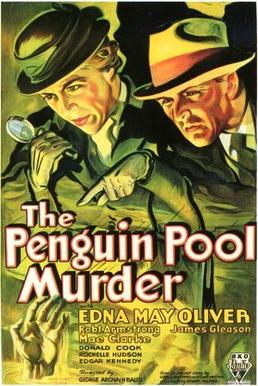
The Penguin Pool Murder is a 1932 American pre-Code comedy/mystery film starring Edna May Oliver as Hildegarde Withers, a witness in a murder case at the New York Aquarium, with James Gleason as the police inspector in charge of the case, who investigates with her unwanted help, and Robert Armstrong as an attorney representing Mae Clarke, the wife of the victim. Oliver's appearance was the first film appearance of the character of Hildegarde Withers, the schoolteacher and sleuth based on the character from the 1931 novel The Penguin Pool Murder by Stuart Palmer. It is the first in a trilogy including Murder on the Blackboard, and Murder on a Honeymoon, in which Oliver and Gleason team up for the lead roles.

Murder on the Blackboard is a 1934 American pre-Code mystery/comedy film starring Edna May Oliver as schoolteacher Hildegarde Withers and James Gleason as Police Inspector Oscar Piper. Together, they investigate a murder at Withers' school. It was based on the novel of the same name by Stuart Palmer. It features popular actor Bruce Cabot in one of his first post-King Kong roles, as well as Gertrude Michael, Regis Toomey, and Edgar Kennedy.

Ruth Donnelly was an American film and stage actress.
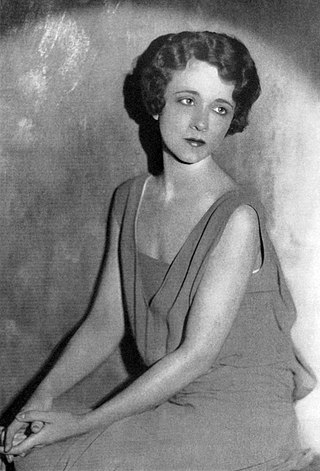
Bergetta "Dorothy" Peterson was an American actress. She began her acting career on Broadway before appearing in more than eighty Hollywood films.
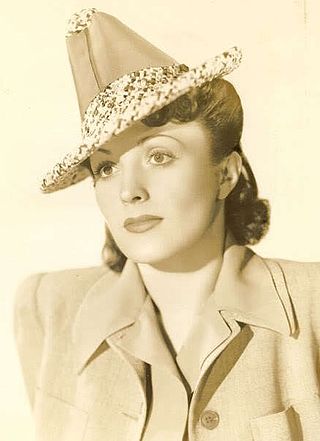
Mary Katherine Linaker was an American actress and screenwriter who appeared in many B movies during the 1930s and 1940s, most notably Kitty Foyle (1940) starring Ginger Rogers. Linaker used her married name, Kate Phillips, as a screenwriter, notably for the cult movie hit The Blob (1958). She is credited with coining the name "The Blob" for the movie, which was originally titled "The Molten Meteor".
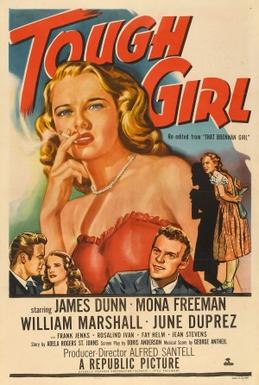
That Brennan Girl, also known as Tough Girl, is a 1946 melodrama film produced and directed by Alfred Santell and starring James Dunn, Mona Freeman, William Marshall, and June Duprez. The story concerns a young woman raised in an unwholesome environment who joins a confidence racket run by one of her mother's friends. She agrees to marry the victim of one of her scams, becomes a war widow, and is left to raise a baby, but abandons it each evening to go out dancing. After the child suffers an accident in her absence, she is charged with child neglect and loses custody. She mends her ways by devotedly caring for an abandoned infant and meets up again with the con man, who has also reformed after a prison stint, and together they build a new life. The film was the last work of director Santell and the last leading role for actor Dunn.

Edith Marilyn Fellows was an American actress who became a child star in the 1930s. Best known for playing orphans and street urchins, Fellows was an expressive actress with a good singing voice. She made her screen debut at the age of five in Charley Chase's film short Movie Night (1929). Her first credited role in a feature film was The Rider of Death Valley (1932). By 1935, she had appeared in over twenty films. Her performance opposite Claudette Colbert and Melvyn Douglas in She Married Her Boss (1935) won her a seven-year contract with Columbia Pictures, the first such contract offered to a child.

Janet Beecher was an American stage and screen actress.
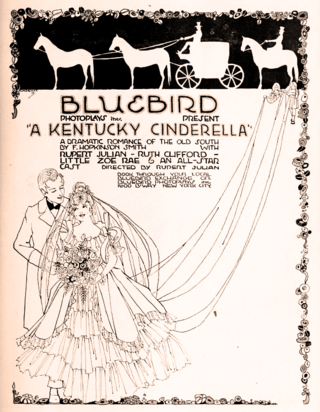
A Kentucky Cinderella is a 1917 American silent drama directed by Rupert Julian and featured Rupert Julian and Ruth Clifford, and a cast including child actress Zoe Rae. It was released June 25, 1917 by Bluebird Photoplays, a subsidiary of Universal Studios.
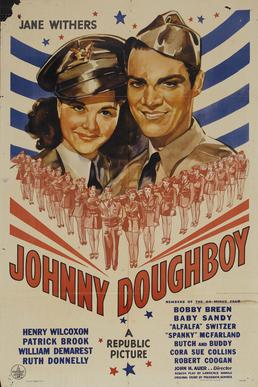
Johnny Doughboy is a 1942 American black-and-white musical comedy film directed by John H. Auer for Republic Pictures. It stars Jane Withers in a dual role as a 16-year-old actress who is sick of playing juvenile roles, and her lookalike fan who is persuaded by a group of "has-been" child stars to perform with them in a U.S. troop show. The film features cameos by ex-child stars Bobby Breen, Carl "Alfalfa" Switzer, George "Spanky" McFarland, Baby Sandy, and others. It received an Academy Award nomination for Best Musical Score.

Paddy O'Day is a 1936 American comedy-drama film directed by Lewis Seiler and released by 20th Century Fox. It stars Jane Withers, Pinky Tomlin, and Rita Hayworth. The story follows the adventures of a plucky Irish girl who arrives at Ellis Island only to discover that her mother, a cook in a wealthy Long Island home, has died. Hiding from the immigration officers who want to deport her, she charms everyone she meets, including the service staff and reclusive young master of the house. She goes to live with a family of Russian dancers that she met on the ship, and performs with them in their nightclub. Withers uses a heavy Irish brogue for her character and sings one song with an Irish accent and another song with a Russian accent. She also dances in several numbers, while Hayworth performs a traditional Russian dance in a nightclub revue.

Gentle Julia is a 1936 American drama film directed by John G. Blystone and starring Jane Withers, Tom Brown and Marsha Hunt. It is an adaptation of the 1922 novel of the same title by Booth Tarkington.
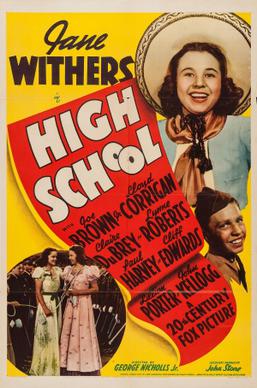
High School is a 1940 American teen comedy film directed by George Nicholls, Jr. and written by Jack Jungmeyer, Edith Skouras, and Harold Tarshis. The film stars Jane Withers as a spirited 13-year-old tomboy who is sent from her widowed father's ranch to learn at Thomas Jefferson High School in San Antonio, Texas, where she alienates her fellow students with her arrogant and know-it-all personality. The script draws from the real-life activities of the high school's ROTC, band, and "Lassos" girls pep squad.
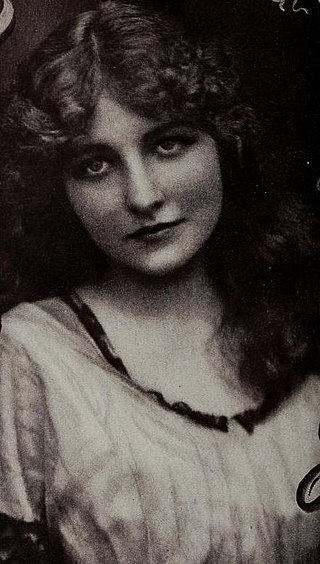
Isabel Lamon, also billed as Isabel Baring, was an American actress in silent films. Among many roles, she played Meg March in the second filmed adaptation of Louisa May Alcott's Little Women.
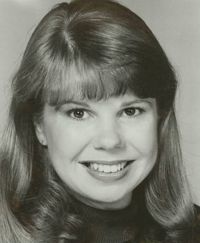
Bernadette Withers was an actress best known for playing Ginger on Bachelor Father, Janis on Karen, and Valerie in The Trouble with Angels. Some sources claim that actress Jane Withers was her aunt, but since Jane Withers had no siblings she did not have any nieces.





















